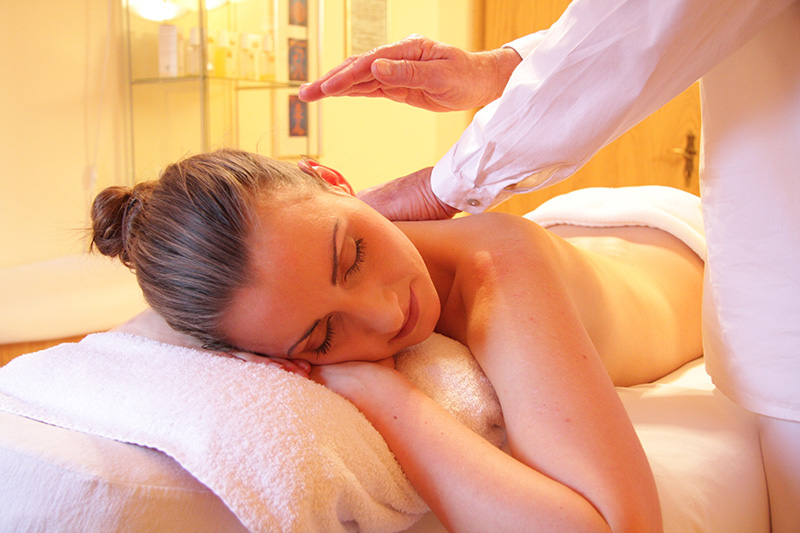Being ticklish isn’t a sin but it can be an inconvenience when you’re on a massage table and being pampered with massage therapy at a Massage Heights. You will twitch and giggle whenever your therapist hits your ticklish spot, whether it’s on your feet or in the inside of your thigh. Your enjoyment of a relaxing full body massage seems incomplete because your ticklish spots weren’t massaged as well as the other parts.
Fortunately, it isn’t the end of the world – or at least, the end of your visits to your favorite massage clinic. Here’s information as well as a few tips to deal with your ticklishness.
Theories About the Tickle Tendency
We have little to no control over the parts where we are ticklish the most – just ask anybody and you will realize that you’re not alone in this regard. But surprisingly, we can’t tickle ourselves, and we will see why later. Basically, ticklishness is a sensation caused by your body’s response to stimulation and it’s a response that’s distinct from pressure, pain, and itch.
But here’s the thing about the tickle sensation – scientists have yet to fully understand the mechanism behind it but there are plenty of theories. In general, the body’s touch receptors translate the movements including distortions occurring in the cell membrane and then interpret them as sensations. These sensations are currently divided into four known categories – temperature, light pressure, deep pressure, and pain.
The tickle sensation obviously isn’t one of them, and that can make controlling it more challenging.
Most scholars theorize that the brain is responsible for distinguishing the tickling response from the four known skin sensations; in these sensations, the skin receptors perform the work, so to speak. The brain appears to be the one responsible for the ticklish response because we cannot tickle ourselves no matter how much we try.
In contrast, the touch receptors in the skin cannot distinguish between the touch of two different persons, particularly between you touch and the touch of another person, although you’re well aware of it. When you try to tickle yourself in your ticklish areas, you won’t become ticklish but when another person does so, you immediately respond with a twitch and/or a giggle. Your brain knows the difference.
There’s also the anticipation of a tickle to consider. Even when another person doesn’t actually make physical contact with your ticklish spots, you will react in the same way as if an actual touch happened. The brain apparently interpreted the mere anticipation as actual action, a series of reactions that isn’t common in skin receptor stimulation.
But don’t be frustrated about your ticklishness either. You will find that it has its uses, such as alerting you to the presence of foreign objects on your body, such as a poisonous scorpion crawling up your ticklish areas.
Tips to Deal with Ticklishness
Don’t let your ticklishness become a hindrance to your regular massage sessions, too. The trick is in understanding what’s causing it and how you can deal with it.
Look at the Possible Causes
Aside from your neck, feet or inner thigh being ticklish by nature, you may also be ticklish in general for other reasons. You may experience discomfort or nervousness with an unfamiliar touch. You may also be feeling anxious or vulnerable because of your near-nude state.
Perhaps, the ticklish spots have built up tension or knots that become overly stimulated even with the lightest touch. Your body may have stagnant or excessive energy in these spots so even the anticipation of a touch makes you want to squirm.
Once you have a basic idea of why you’re ticklish in areas that aren’t ticklish off the massage bed, then you will likely have better control over your body’s response. You can, for example, relax more while on the massage bed so you don’t feel so ticklish.
Be sure to communicate with your therapist about your ticklish spots before the session starts. This way, your therapist can make adjustments in the place and pressure of the massaging actions.
For one thing, your therapist can also make adjustments to the sequence of the massage. You will first be put into a relaxed state and be familiar with your therapist’s touch before your sensitive areas are treated.
Your therapist will start with the least sensitive or threatening areas of your body, usually the back, and then move on to the more sensitive parts like the neck, head and limbs. Such thoughtful sequencing will likely make you feel more comfortable and safe so you don’t feel too ticklish when your therapist moves into more sensitive parts.
For another thing, your therapist can also modify the pressure on your ticklish parts. Generally speaking, the broader the strokes and the deeper the pressure, the less ticklish the action will be. Your therapist may also slow down the stroke and/or change the stroke to induce a less ticklish response.
But if all else fails, then you and your therapist can agree to skip your ticklish areas. It’s often as simple as avoidance.
